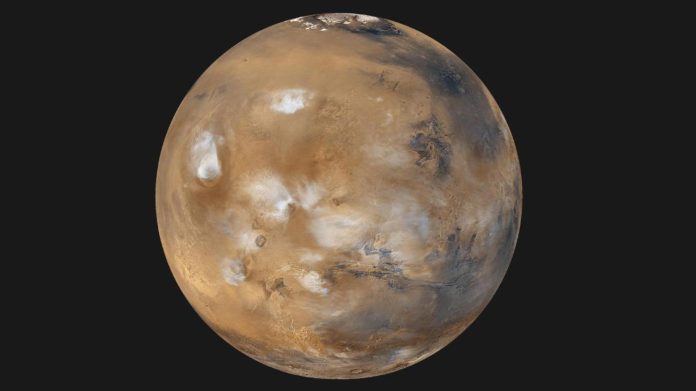
For years, people have wondered if Mars, a cold and lifeless planet, could be transformed into a place where life could thrive.
A team of scientists from the University of Chicago, Northwestern University, and the University of Central Florida have now proposed an exciting new method that could make Mars warmer and more suitable for life.
Their research, published in Science Advances, suggests using special dust particles to raise the planet’s temperature by over 50 degrees Fahrenheit, which could be enough to support simple life forms like microbes.
The idea of warming Mars, known as terraforming, isn’t new.
Scientists have been dreaming about it for decades, with ideas ranging from the far-fetched to the scientifically possible.
However, most of these ideas have faced huge challenges, such as the need to bring massive amounts of materials from Earth or use rare resources found on Mars.
The new method is a game-changer because it relies on materials that are already abundant on Mars. The research team found that Mars’ dust, which is rich in iron and aluminum, could be engineered to trap heat and warm the planet.
By altering the shape and composition of these dust particles, the researchers believe they can significantly enhance Mars’ natural greenhouse effect, which would help trap solar heat on the surface.
The scientists designed tiny particles shaped like short rods, similar to glitter. When released into Mars’ atmosphere, these particles would scatter sunlight back towards the planet’s surface and trap heat, warming the planet more efficiently than any previous method.
According to their calculations, releasing these particles at a steady rate could warm Mars by over 50 degrees Fahrenheit, potentially within just a few months.
This method is 5,000 times more efficient than previous proposals, making it much more feasible.
While this method shows great promise, the researchers caution that much more work is needed before it can be implemented. One of the big unknowns is how long the engineered dust particles would stay in Mars’ atmosphere.
The planet has clouds and water, and as it warms, these particles could cause rain to fall, which might remove the dust from the atmosphere.
The researchers stress the importance of careful study and testing before attempting to use this method on Mars. They also note that their focus is on making Mars warm enough for simple life forms and possibly growing food crops—not on making the planet ready for humans to live on without protection.
Although warming Mars to make it habitable for humans is still a long way off, this research represents a significant step forward in that direction.
The ability to make Mars warmer and more hospitable, even for microbes, could be the foundation for future efforts to establish a human presence on the Red Planet.
As lead researcher Edwin Kite of the University of Chicago said, “This research opens new avenues for exploration and potentially brings us one step closer to the long-held dream of establishing a sustainable human presence on Mars.”



